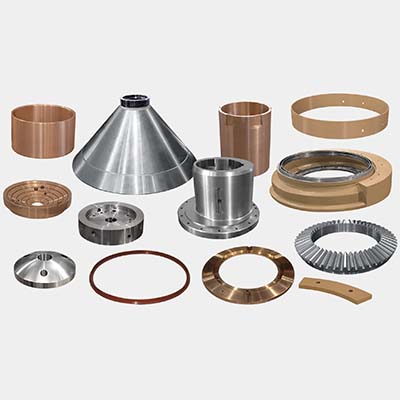
The selection of the right crusher is essential for each procedure. Knowing the various stages of crushing and the types of crushers that best fit each stage will make it easier to choose the appropriate equipment. Every type of crusher has distinct functions and is used for achieving an exact end-product.
Similarly, a certain output is expected to be produced at the end of each crushing stage to determine the next stage of the process. Aggregate producers who pair the right mill liners foundry to the right stage will be the most efficient and, ultimately, most profitable.
The crushing stages
Aggregate producers are well-versed in selecting the best crushing equipment. They are aware that they can pick the right piece of equipment based on specifications and calculation of gradation. However, it is important to evaluate the theoretical implications against the actual experience of the material as well as the economic, maintenance, and operational features of different options.
In general, material reduction is handled in stages. There are some single-crusher systems, but the most common systems require at minimum two or three crushing stages.
Primary crushing. The main function of the primary crusher is first and foremost all the ability to move material along a conveyor belt. In most aggregate crushing facilities primary crushing takes place by a jaw crusher however, a gyratory primary crusher may be used. If material is easily crushed and not excessively abrasive, an impact breaker could also be the most suitable option.
One of the most important attributes are its capacity and capability to handle raw material with no blockages. Bigger primary crushers can be more costly to purchase than smaller ones. This is the reason why primary crusher investment costs are considered against the cost of blasting raw materials into smaller dimensions.
In most cases trucks move the raw materials to a primary. The costs of fuel, tires, maintenance and the return on investment must be taken into account.
In cases where the quarry face is being crushed pit-portable primary crushing plants can prove to be a cost-effective option. Modern machines typically require a mobile primary crusher that can move with the quarry face.
Intermediate (secondary) crushing. The goal of intermediate crushing is to produce different coarser fragments or to prepare materials for final crushing. If the intermediate crusher is employed for making railway ballast it is essential to ensure the product’s quality.
In other cases, there are normally no quality requirements, although the product must be suitable for fine crushing. The main aim is to get the greatest possible reduction at the lowest cost.
Fine (tertiary) crushing. At this stage, the quality and quantity of fine products are decided. The quality requirements may be strict for final products, specifically in the aggregate industry.
In most cases, fine crushing and cubing are combined into the same crushing process. Practical experience as well as an understanding of the theory are necessary when choosing a crusher to use for secondary crushing. To ensure a properly designed process, manufacturers should seek the advice of an experienced application specialist.
Types
Jaw crushers
Jaw crushers are one of the types of compression crushers. The material can be reduced by pressing it between two pieces steel. The size of the discharge is determined through the setting or space between these two pieces of steel. The setting is tighter which results in less output and lower throughput capacity.
As a compression crusher, jaw crushers generally produce the coarsest material because they break rock through the natural lines of weakness. Jaw crushers make a great primary crusher when used to prepare rocks for later processing steps.
Cone and Gyratory Crushers
They also crush steel between two pieces of steel. The output can be controlled through the position between the two pieces.
The chamber is circular in shape however the steel moving part is not intended to rotate. Instead the wedge is driven around to cause compression on the one side and discharge openings on the other side. Cone crushers are used in secondary and tertiary applications as an alternative to impact crushers when the shape of the crusher is a major requirement, but the proportion of fines generated must be kept to a minimum.
Impact crushers
An impact crusher makes use of mass and velocity in order to reduce feed materials. The feed material first gets reduced when it is placed in shredder parts that is rotated by the hammers or blow bars of the rotor. The second breakage occurs when the material is accelerated to the stationary aprons or breakers plates.
If the shape of the rock is crucial, impact crushers are often used. Impact crushers crush rock according to natural cleavage lines, resulting in higher quality products and form.
Final thoughts
When choosing the crusher that will best meet your requirements It is important to know your needs for each step.
In the initial phase, ensure that you get material that is large enough to accommodate your conveyors and other equipment used for processing.
Certain operations require additional crushing in the secondary or tertiary stages. These stages provide more control over the amount and shape of the output.
You can increase the effectiveness of your crusher and maximize your profits by matching the right jaw crusher to the appropriate stage.